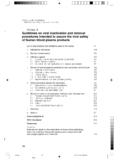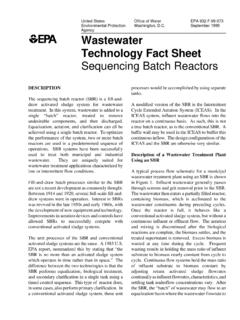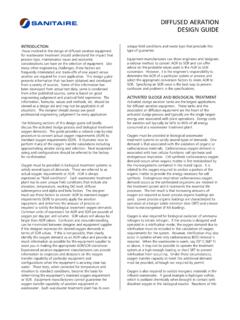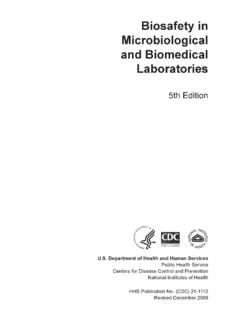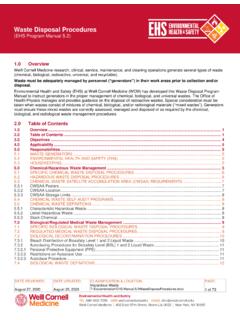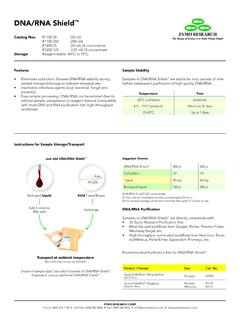Transcription of Chemical, biological, radiological and nuclear CBRN ...
1 Chemical, biological , radiological and nuclear incidents: clinical management and health protectionProtecting and improving the nation s healthChemical, biological , radiological and nuclear incidents handbook2 Chemical, biological , radiological and nuclear incidents handbook3 Chemical, biological , radiological and nuclear incidents: clinical management and health protectionGent N, & Milton R, incidents: clinical management & health ed. London: Public Health England; Publications gateway number 2018080 Chemical, biological , radiological and nuclear incidents handbook4 Executive summary 7 Incident Management Principles Immediate incident management for first responders 10 Step 1, 2, 3+ incident scene triggers for emergency personnel.
2 10 Medical Emergency Response Incident Teams (MERIT) and Hazardous Area Response Teams (HART) ..11 Initial triage ..12 Incident scene priorities ..12 Personal protective equipment (PPE) ..13 Decontamination of casualties ..14 Infection control 16 Standard precautions prevention of contact transmission ..16 Droplet spread disease precautions ..17 Aerosol spread disease precautions ..18 Suspect packages and parcels ..20 Emergency contacts template 22 Incident management records 24 Chain of evidence documentation 26 Chemical ThreatsDiagnosis and early management in chemical incidents 30 Recognising the release of a chemical.
3 30 Clinical response if you know, or strongly suspect, that your patient has been involved in a chemical incident ..30 Public health response if you know, or strongly suspect, that your patient has been involved in a chemical incident ..30 Evaluating rapidly evolving chemical exposure syndromes ..32 Understanding chemical hazard labels 33 Exposure Limit Values 37 Recognition and Management of Specific Chemicals and Toxidromes 39 Nerve agent (organophosphate poisons) ..39 Toxic industrial chemicals Chlorine (Cl2) and other irritant gasses.
4 42 Incapacitating agents (anticholinergics / volatile anaesthetics / opioids including fentanyls / psychotropics) ..44 Riot control agents (tear gas / CS gas / pepper spray / mace) ..46 ContentsChemical, biological , radiological and nuclear incidents handbook5 Carbon Monoxide (CO) ..49 Hydrogen cyanide (HCN) and cyanide salts ..51 Hydrogen fluoride (HF) / hydrofluoric acid ..54 Hydrogen Sulphide (H2S) ..56 Phosgene (COCl2) ..58 Phosphine (PH3) ..60 Sulphur mustard ..62 Toxins (ricin and abrin) ..64 biological threats biological agents: syndromes and differential diagnosis 68 Deliberate release incidents, recognition & response.
5 68 Differential diagnosis of unusual infections ..71 Microbiological testing ..73 Pre and post exposure prophylaxis ..74 Recognition and Management of Specific biological Agents 77 Anthrax ..77 Botulism ..80 Brucellosis ..82 Glanders ..84 Plague ..86Q Fever ..88 Coronavirus infections, severe acute respiratory syndrome (SARS) and Middle Eastern respiratory syndrome (MERS) ..90 Shiga-toxin producing Escherichia coli (STEC) ..93 Smallpox ..95 Tularemia ..98 Venezuelan equine encephalitis (VEE) ..101 Viral haemorrhagic fever (VHF) ..103 Radiation threatsRadiation Facts 108 Ionising radiation.
6 108 Exposure and contamination ..109 Measuring radioactivity and radiation ..109 Radiation doses and dose limits ..110 Chemical, biological , radiological and nuclear incidents handbook6 Radiation injuries 111 Management of acute radiation injuries.. 112 Post recovery management ..113 Staff safety and patient management priorities during a radiation incident ..113 Recognition and management of graded ionising radiation injuries 115 European Society for Blood and Marrow Transplantation (EBMT) clinical scoring guide ..115 Assessment of large groups of individuals exposed to an ionising radiation source.
7 116 Managing EBMT score I patients ..117 Managing EBMT score II patients ..118 Managing EBMT score III patients ..120 Mass Casualty GuidelinesManagement of blood-borne virus risk in victims of significant blast or multiple victim attacks creating penetrating injuries (hepatitis B, C and HIV) 123 Antibiotic prophylaxis guidance for bomb blast victims 127 Antimicrobial prophylaxis for suspected exposure to deliberate release of a bacterial agent (anthrax, plague, tularemia) 135 Management of potential injury to hearing following an attack involving blast 139 Management of potential brain injury following an attack Involving blast 143 MRI following an attack involving bomb blast or bullet wounds 145 Chemical, biological , radiological and nuclear incidents handbook7 Executive summaryThis is the first full revision of a suite of advice originally published in 2006 by the Health Protection Agency, a predecessor body of Public Health England, under the title CBRN incidents.
8 Clinical management and health protection .This new edition updates the chemical and biological guidance given in the 2006 edition and adds additional material on a range of new and emerging threats in these radiation incident response section has been completely re-written to integrate the well-established European Society for Blood and Marrow Transplantation s rapid clinical assessment tool with care pathways derived from the WHO global consensus guidelines on radiation materials have also been included concerning the health protection elements of response to mass casualty
9 Incidents including hearing loss, blood-borne virus transmission, antibiotic prophylaxis for bomb injury wounds and screening for cognitive audience for this publication remains to be first responders, emergency departments and public health and health protection have retained the system of keeping the disease, syndrome, or agent specific advice sheets as being capable of being used as standalone items that can be printed out and used to inform staff responding to identified publication is the product of the advice and guidance offered by very many colleagues from the United Kingdom s National Health Service, Defence Medical Services, and Public Health England.
10 The guidelines on the management of chemical casualties was reviewed by colleagues from the UK s National Poisons Information Service; and the contents of the whole document approved by National Health Service England s Emergency Preparedness and Response Clinical Reference editors and principal authors wish to thank all of these colleagues, too numerous to list individually, for all their help and , biological , radiological and nuclear incidents handbook8 Incident Management PrinciplesChemical, biological , radiological and nuclear incidents handbook10 Immediate incident management for first responders Step 1, 2.










